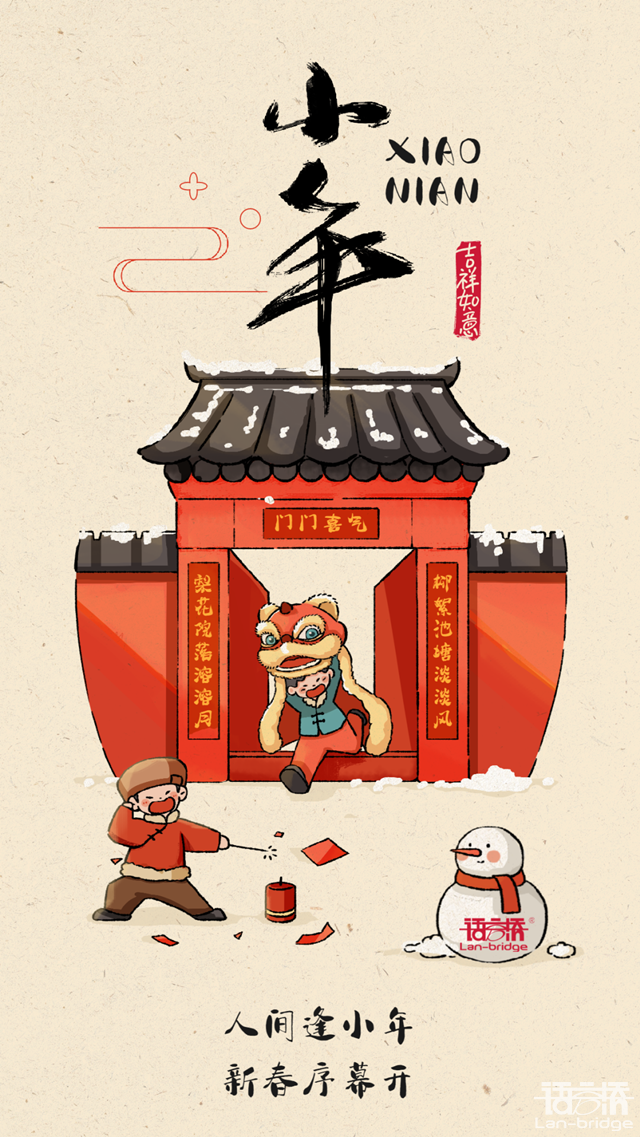由于風(fēng)俗差異,日歷將臘月廿三和廿四都標(biāo)注為小年,原因在于南北方的小年會相差一天,北方多數(shù)人廿三過小年,而南方人的小年則要晚一天。
小年也被視為過年的開端,因此這幾天全國人民都開始為迎春節(jié)做起了準(zhǔn)備啦。
官家的小年是臘月二十三,百姓家的是臘月二十四,而水上人家則是臘月二十五。那時,祭灶日的地位僅次于中秋節(jié),在外做官、經(jīng)商或讀書者,都要在祭灶日前趕回家團圓,吃自家做的祭灶糖果,以求灶神祈福、來年全家平安。小年是春節(jié)慶祝活動的開始和伏筆,是春節(jié)的序幕開端。
小年習(xí)俗
【祭灶】
小年最獨特的一個傳統(tǒng)就是焚燒灶王爺?shù)漠嬒瘢源伺汕苍钔鯛數(shù)撵`到天界去報告過去一年這個家庭的行為。然后在灶旁貼一張他的新畫像來歡迎他回家。
(Kitchen God Worshipping)One of the most distinctive traditions of the Little New Year is the burning of a paper image of the Kitchen God, dispatching the god's spirit to Heaven to report on the family's conduct over the past year. The Kitchen God is then welcomed back to the home through the pasting of a new paper image of him beside the stove.
【掃塵】
在中國,“塵土”的“塵”這個漢字與“陳舊”的“陳”同音。中國人相信,通過徹底地清掃房子,可以讓他們擺脫過去一年的貧窮和霉運,迎來一個繁榮的新年。
(Spring Dust)In Chinese, the character for "dust" is a homophone of the character for “the old”. By giving the house a thorough cleanse on the day, Chinese people believe that this would rid them of their poverty and bad luck from the previous year, so as to welcome a prosperous new year.
【貼春聯(lián)和窗花】
在小年的時候,上個春節(jié)時貼的春聯(lián)和窗花被摘了下來,新的窗花、年畫和喜慶的裝飾品會被張貼起來。
(stick couplets and window decorations)In the Little New Year, old couplets and paper-cuts from the previous Spring Festival are taken down, and new window decorations, New Year's posters, and auspicious decorations are pasted up.










 蜀ICP備14015776號-4
蜀ICP備14015776號-4
